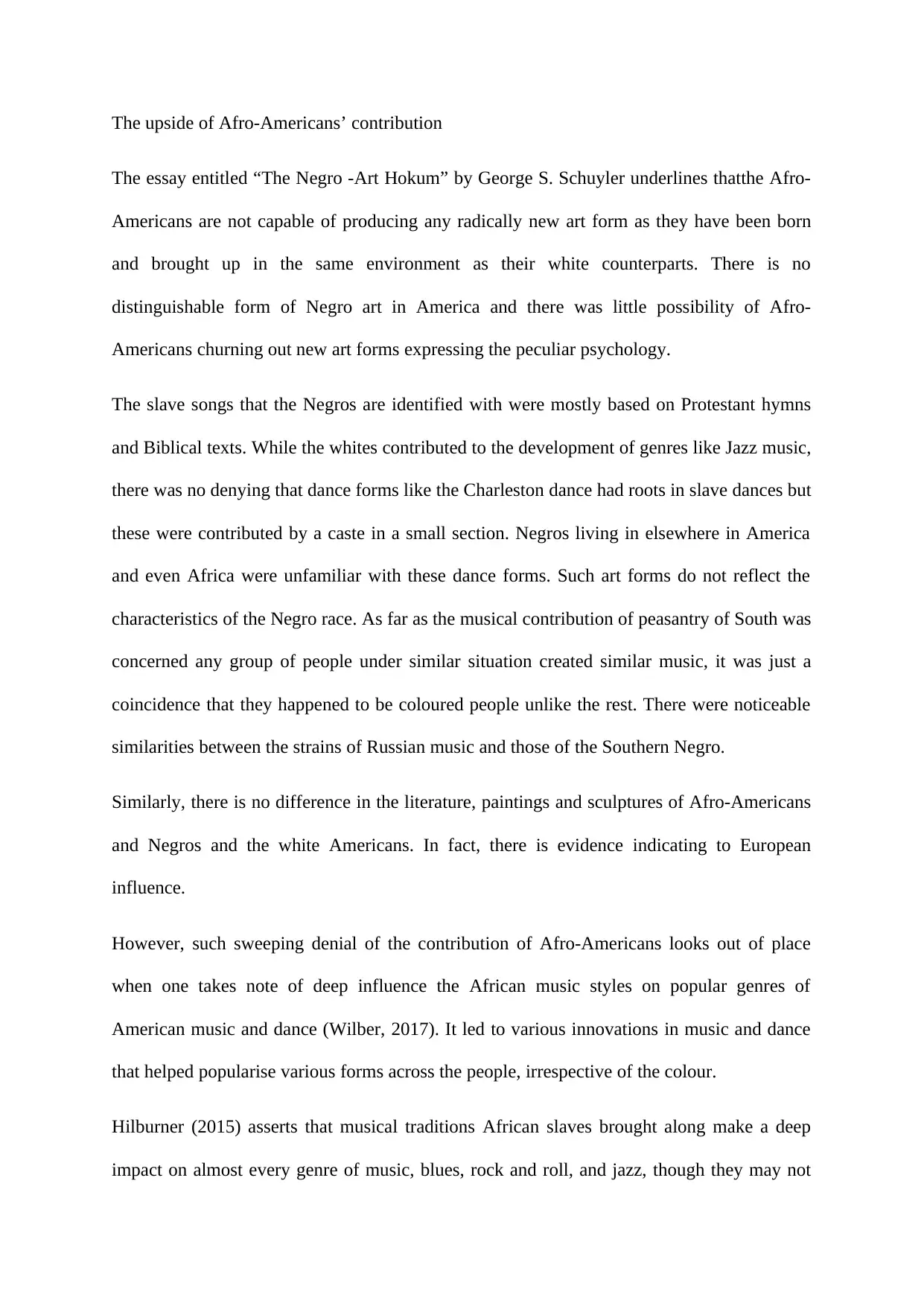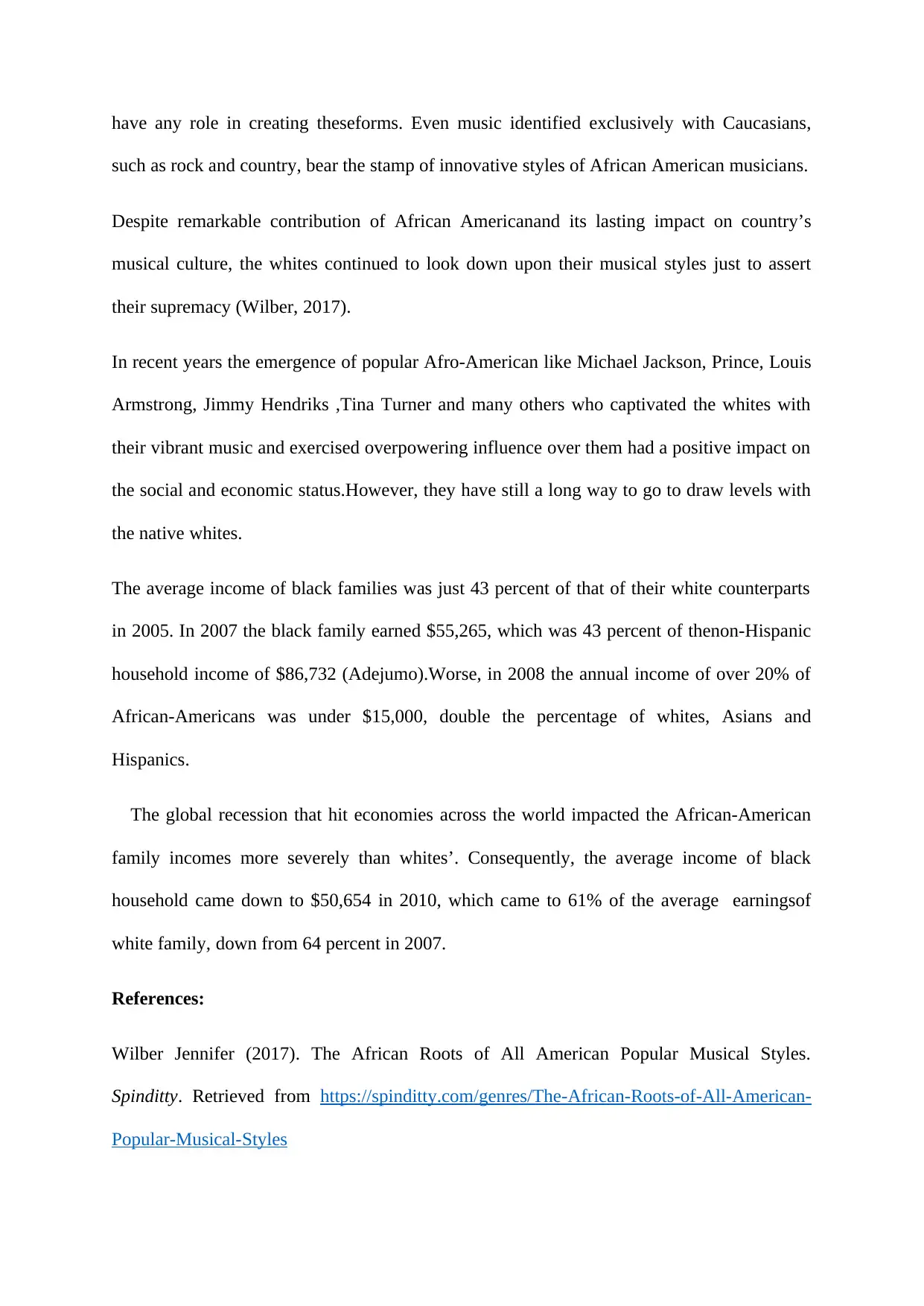Exploring the Impact of Afro-American Contributions in America
VerifiedAdded on 2023/01/10
|3
|702
|83
Essay
AI Summary
This essay critically examines George S. Schuyler's argument in "The Negro-Art Hokum" regarding the lack of original art forms produced by Afro-Americans. It refutes Schuyler's claims by highlighting the significant influence of African musical styles on various American music genres, including jazz, blues, and rock and roll. The essay acknowledges the contributions of prominent Afro-American musicians like Michael Jackson and Prince, while also addressing the ongoing economic disparities faced by the community, such as the income gap between black and white families. The analysis underscores the lasting impact of Afro-American contributions to American culture, music, and the challenges faced by them in achieving social and economic parity.
1 out of 3





![[object Object]](/_next/static/media/star-bottom.7253800d.svg)